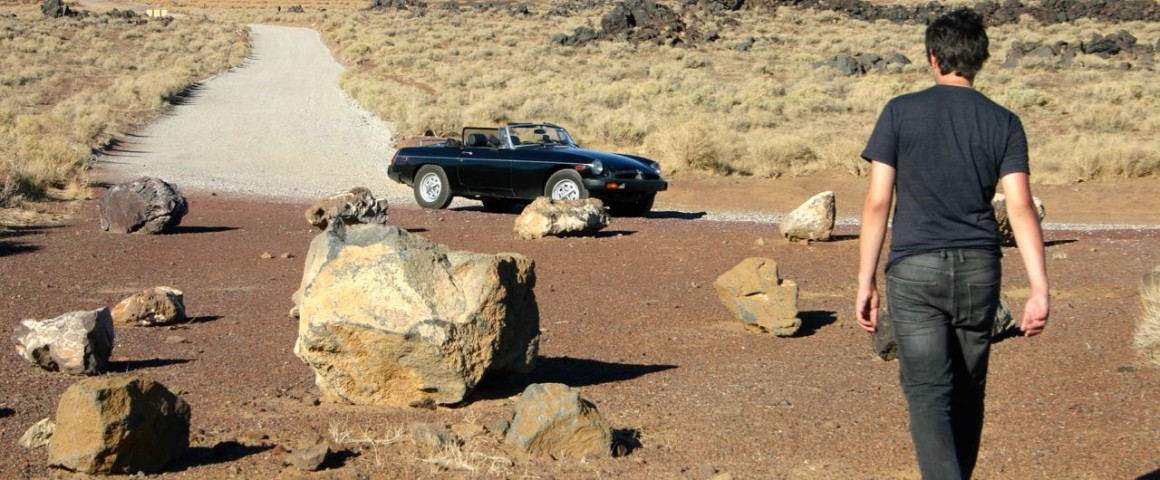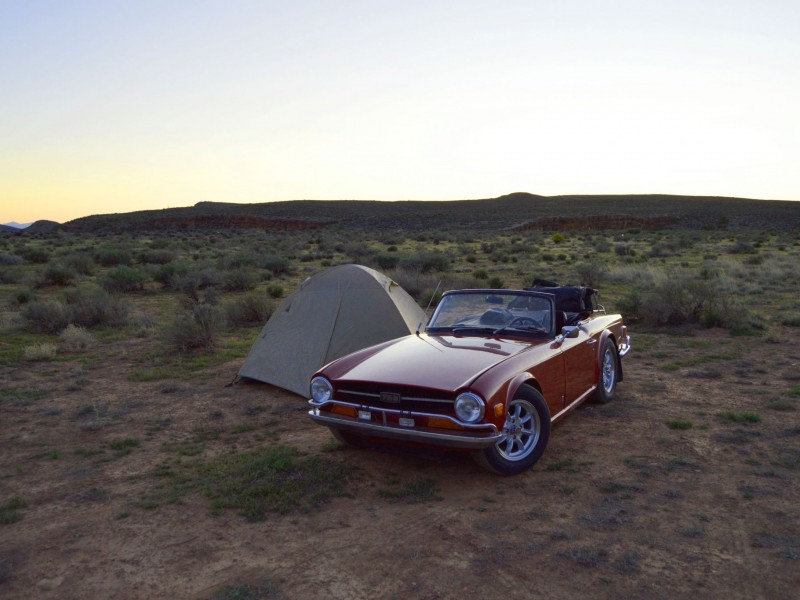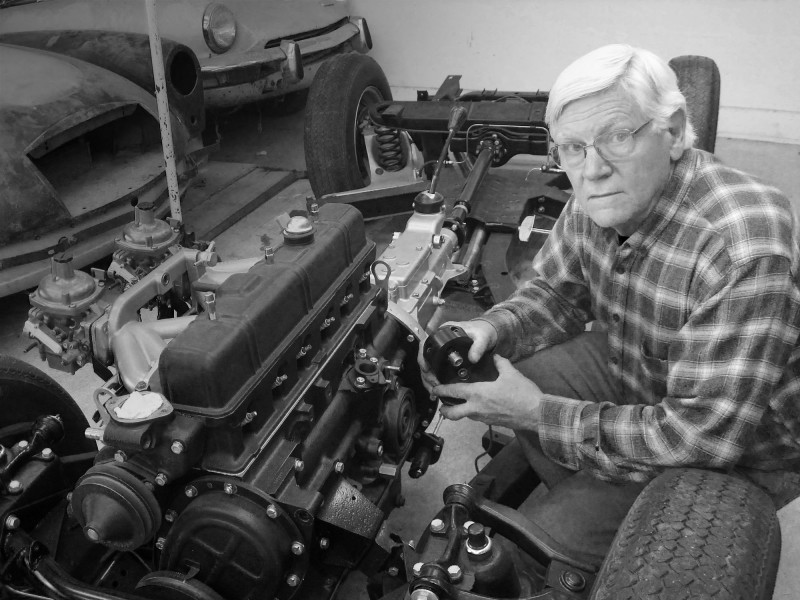By Ron Zayas
I was in Las Vegas starting my first year of college. With the leftover proceeds from my student loan (Who needs books?), I had $500 of stake money and I knew exactly what I wanted: an MG convertible.
I credit a friend’s father (a transplanted Oxford grad, who went on to work for BMC) for introducing me to the marque. His shiny MGB with overdrive caused the automotive equivalent of imprinting on me. It could have also been his four attractive daughters, but why quibble? Either way, I was hooked.
I knew finding a B for $500 was going to be tough, so I settled for the B’s sportier and less expensive sister. I purchased a 1970 blue MG Midget that ran perfectly except for not having a master brake cylinder, which meant that I didn’t actually drive it before I bought it.
My father pointed out every flaw in my teenage logic, but still took on the project with me to get it to run. A master cylinder quickly escalated to brake pads and rear cylinders, a new coil, rebuilding the carbs, and putting in a new clutch. We splurged on new cylinders (bored out for extra oomph) and, of course, the mandatory cassette player and speakers. Music was a higher priority than a top, so I went without. In the Vegas winter, I had to gut a Tauntaun to stay warm on my way to school. Solid choices.
Within a few weeks, I was driving to California on my days off of school to have lunch with my friends. Back before traffic choked I-15 (actually, it was before I-15 was even completed), I could easily head out at 8 a.m., have lunch with my friends and be back in time for work at 6 p.m.
Over tacos, we got on the subject of how long it took to drive to Vegas, and ended up playing a game of one-upsmanship with miles and minutes slicing away. I made it once in 3:45. Yeah, that’s fast, but my dad and I did it once in 3:30, with the wind at our backs and aligned with the rotation of the Earth, just right.
“I bet I can do it in 3 hours,” I said. My friends laughed in a chorus of disbelief and ridicule. Someone started doing the math: 270 miles in three hours meant an average speed of 90 mph. Factor in a little traffic leaving Orange County, cops and the Cajon and Baker grades, and you’d have to top 100 to maintain that average. MGs fly apart at less speed than that. But I had a plan: leave at night to avoid traffic and keep the car running as cool as possible.
By 10 p.m. I had gassed up and was heading up CA-55, with Jackson Brown’s “Running on Empty” filling the air. The first leg went well, and I slammed into the Cajon pass on schedule. Going 90 mph meant maintaining 5500 rpm since I lacked overdrive. I was punishing the car, but I knew she could take it. I was hoping she could take it.
Victorville, a notorious speed trap halfway to Barstow, slowed me down, so I floored the pedal after passing the last exit. My accelerator cable snapped, stranding me on the side of the road, cold, dark and despondent, but not beaten. Thirty minutes later I was back on the road, one end of the choke cable linked to the throttle with me awkwardly pulling on the choke to speed up and change gears, a vice grip locking the cable in place; a hillbilly cruise control sans the duct tape. I was mathematically eliminated from making it in three hours, but I didn’t believe it. Did I mention I was 16? (I got kicked out of high school. Rather than have to explain to my parents that I had been expelled, my sister recommended I just enroll at UNLV where she studied. By the time the school figured out my transcripts were incomplete, I had been there for a year, was editor of the student newspaper, and old enough to take the GED. They were highly motivated to let me stay at that point.)
Between Barstow and Baker, singing along to “Hotel California” kept my face from going numb in the night air. Suddenly, I hit a set of dips and actually caught air, hitting the ground with a bone-numbing thud. None the worse for wear, it seemed, I pushed her along, slicing through the lonely darkness.
The Baker grade came quickly, and the telltale third lane magically morphed out of nowhere. Reflective signs were alerting me to turn off my A/C and look for signs of overheating. Heat, gravity, heavy American A/C compressors and poor cooling maintenance were the Four Horsemen of the Apocalypse for cars in the Mojave summer. But it was winter, I had no A/C and my father had smartly replaced my Midget’s toy of a radiator with something much larger, so, what, me worry?
By the time I had made the top of the first grade, the car’s normally loud growl was now drowning out the stereo. The water temp had soared to red territory, forcing me to shift into neutral and coast on the downgrade. The temp cooled, but oil pressure had all but disappeared.
As I hit the base of the next incline, I slipped into fourth, pulling back hard on the choke cable, forcing the speedometer to keep up. I could see another truck lane forming, and prepared to lock the cable into place for the home stretch. I never made it to the sign. The engine noise was deafening and as I strained towards 4,000 rpms, a loud crack and harsh jerk signaled that a rod had shattered and the engine was seizing up. I slammed it into neutral and rolled across the emerging truck lane and onto the shoulder. As I sat shivering in the dark, I looked at my watch and I realized the 3-hour mark had ticked away.
It was a long night. I eventually got picked up but left my poor car abandoned by the roadside. When we brought her home the next day all my father needed was one look underneath the car to know what had happened: that hard thud I took when I defied gravity at the dips had torn a hole in the oil pan. Without oil, revving too fast for too long, and with a knucklehead driver at the helm, my Midget had no chance. He shook his head, numbed by my stupidity.
The human mind is an interesting thing: I don’t remember the amount of pain and effort it took to get my MG back on the road. I don’t recall the money I spent, the many more times she left me stranded in the heat, the cold, the wind and the rain. But I remember that trip vividly, and how good it felt to be alive. Sadly, I also remember the day I sold her, when the practicality of starting a family overcame the selfishness of wanting to hold on to my youth. Yeah, I was young, irresponsible and careless, but having those good memories somehow made the transition to adulthood easier.
Epilogue
Almost 30 years later, with my two oldest in college, my memories drove me back to the arms of a convertible. The idea was to get an upgraded, reliable analogy to my favorite car. Then I thought, why not get the original and make it better? I found a nice 1979 MGB, redid the electrical, outfitted the interior in leather, and added a 5-speed transmission. In the heat of June, I took her to Vegas on a weekday, speeding along the busy but fast moving interstate. Maybe I pushed too hard, maybe that smog equipment-choked engine just wasn’t up to the task. But at the second Baker grade I was once again on the side of the road, same relative place, same broken car. But this time I had AAA, Internet service and an iPad. While I calmly waited for the truck to arrive, I smiled. I was young again. Only better.

The author (right, with his son, Evan) continues to enjoy his love affair with MGs. In addition to his MGB (his TARDIS), he owns a 1976 MG Midget that he has converted to a full electric. Although a pilot, Ron prefers the freedom of his B flying down an old stretch of Route 66 or some other forgotten highway.








'Three Hours to Vegas' has no comments
Be the first to comment this post!